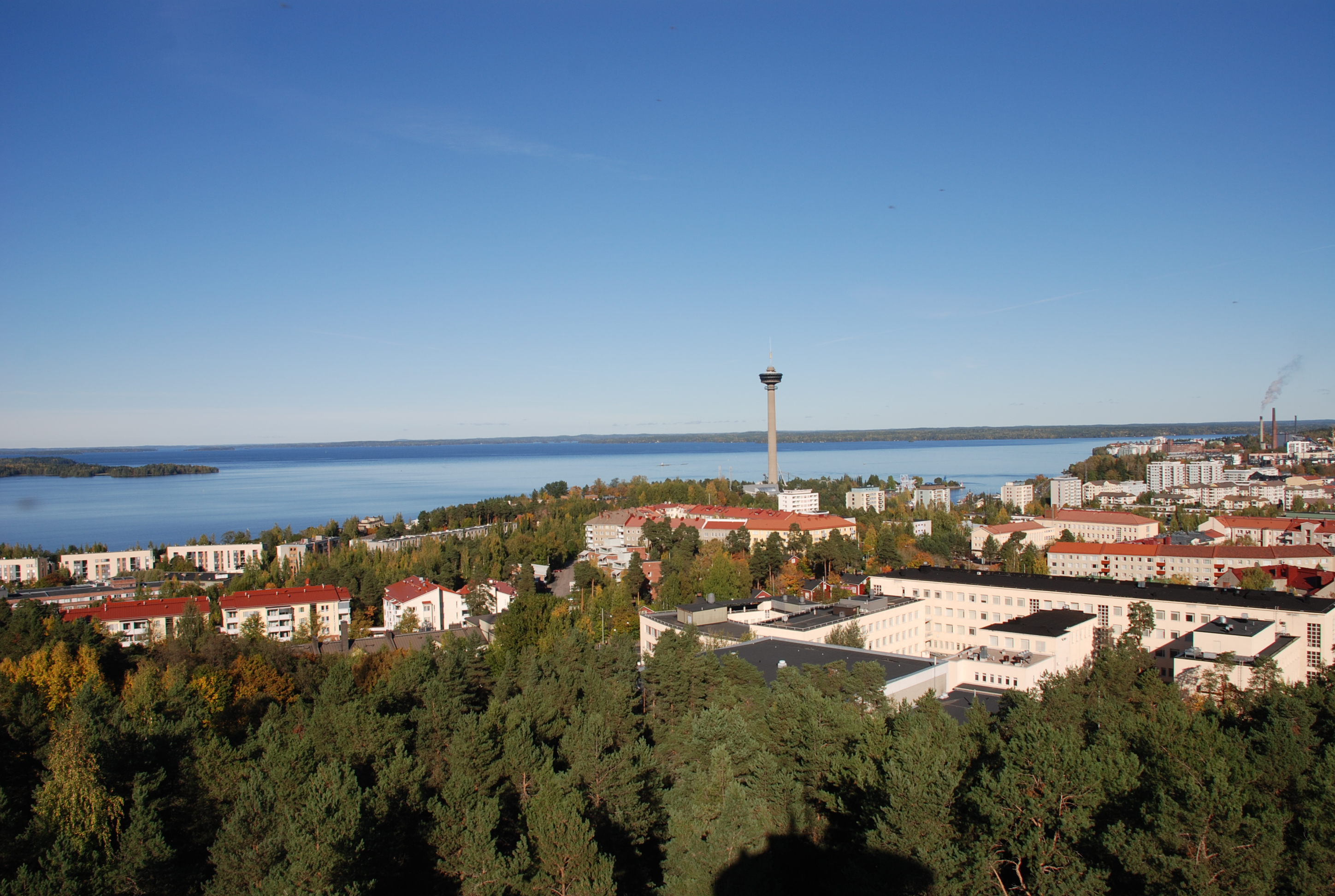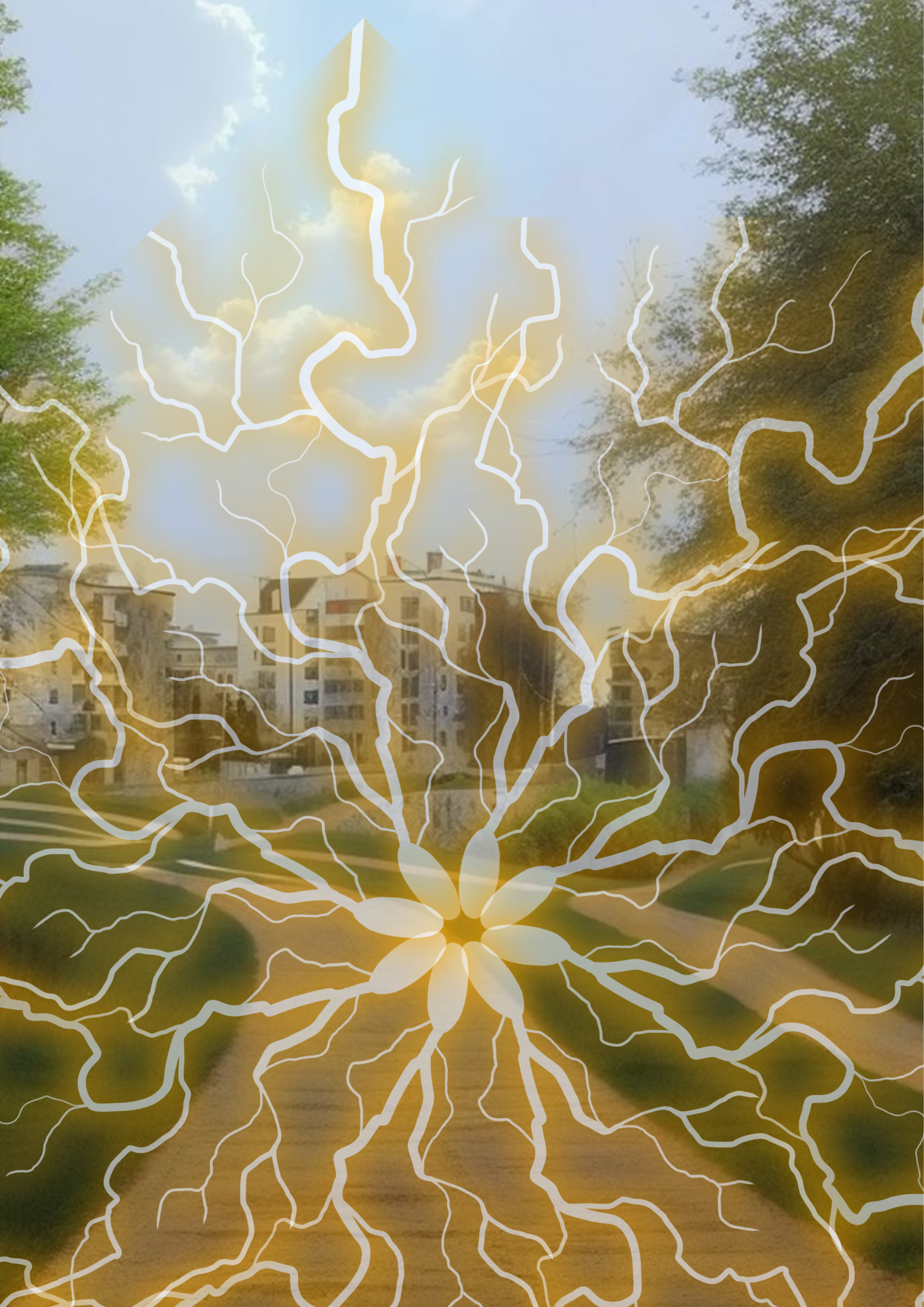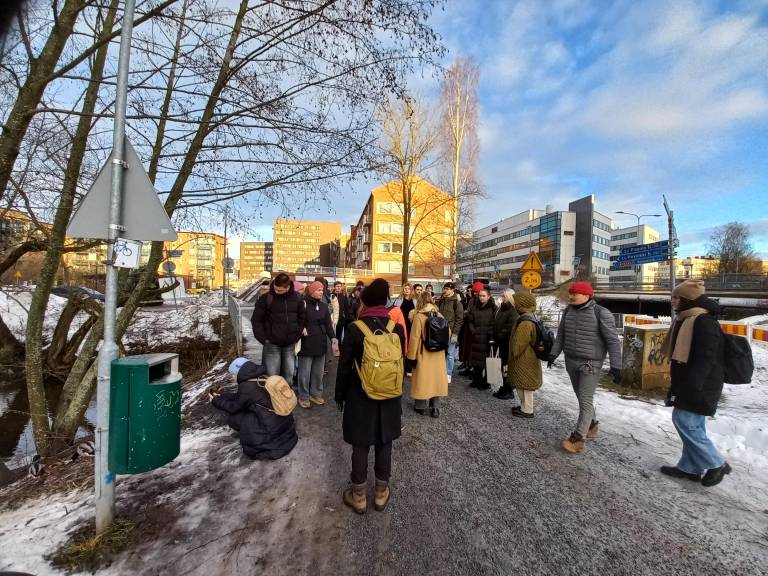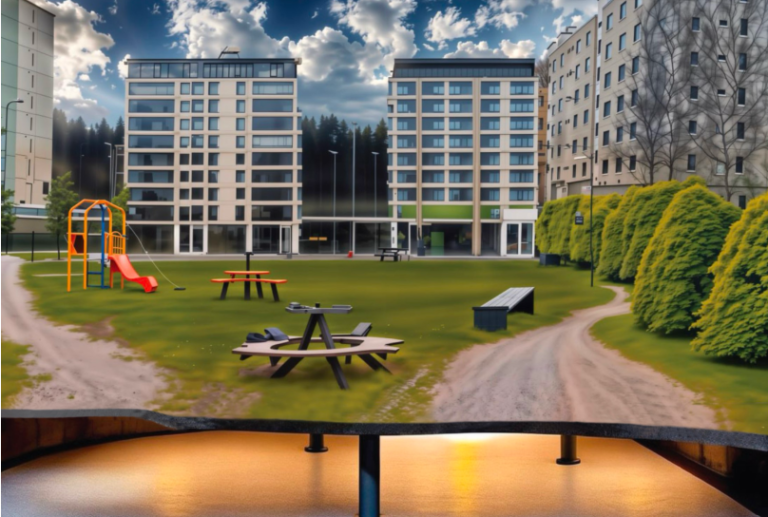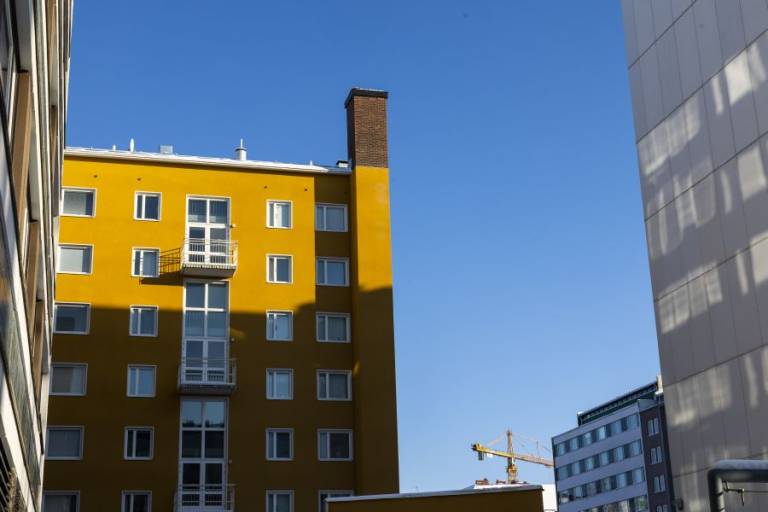Urban Lab 1 and 2, project-based courses within the Sustainable Urban Development degree program at Tampere University, have especially provided students with the opportunity to explore the benefits and effects that community hubs can have in actual urban areas, taking into account local contexts and needs. Although rather unintentionally, this became the focus of my group’s project as we identified a challenge and proposed a solution for the Kaukajärvi and Annala neighbourhoods in Tampere, the areas under discussion in this year’s Urban Lab courses. The challenge my group identified was a lack of community unity. To address this challenge, we suggested that Tammipuisto, through small changes to increase the attractiveness of the greenspace, could be developed into a place where community unity could be fostered. By suggesting such, Tammipuisto became our own version of a community hub that catered to the specific situation in Kaukajärvi and Annala.
During the process of writing our literature review, meant to help our group explain and understand the challenge that we had identified, I found myself drawn to Doreen Massey’s conceptualisation of place. She argues that the creation of place is a constantly occurring process that is made by social interaction and social relations (Massey, 1994, 2005). In other words, place cannot be confined to one single interpretation as it is constantly being formed, and changed, by the interplay of social forces and relations (including historical, political, environmental, and economic) between different actors and elements. We hoped that by suggesting certain changes in Tammipuisto, we could help create more interaction between different members of the community, bringing these forces into a bigger role that would allow for positive interpretations of the place and lead to stronger feelings of community belonging.
Thinking more deeply about Massey’s ideas and the complexity of how places are made through social relations made me realize, however, that I had only been focusing on the cultivation of positive or neutral interactions and failed to consider what those more negative in nature might mean for place creation. A lecture held during the course on Urban Everyday Peace reinforced this and led me to think about conflict and its implications on the construction of place. The first obstacle I faced in doing so effectively was the preconceived notions I held of conflict, specifically how it emerges and what it produces. Fundamentally, people begin to grow their understanding of conflict from the moment that they begin to interact with others. This understanding is shaped by experiences, ranging from small spats with siblings over shared toys to disagreements with classmates or coworkers. These types of conflicts are individual and personal to us, intimately building our understandings of ourselves and the world around us, resulting often in a view of conflict as a negative force that should be avoided. This is the perspective that I found myself with, and in order to fully understand that conflict can be used as a constructive force in urban spatial relations required me to shift my vantage point.
In working towards unraveling the negative connotation of conflict that I held, I had to stop associating it with violence and hostility. Danielak (2020, p. 449) discusses the importance of such a dissociation and how it results in a view of conflict as a “phenomenon of diverging interests” rather than as a negative occurrence that should be prevented. Thereby, to understand conflict in the social, it must embody a synonymous relationship with friction, difference, and dissidence. By understanding that such forces can create, and result from conflict, I found it easier to begin to understand its constructive nature. For example, the differences between Kaukajärvi residents (be it age, ethnicity, length of residence in the area, etc.) can be a source of friction, especially if interactions between certain groups are increased through time spent in a [hopefully future] community area like Tammipuisto. However, the conflicts that will inevitably rise from such friction are integral to creating that community place. Bringing the concept of conflict urbanism —the idea that conflict plays a fundamental role in constructing and reconstructing urban space —into Massey’s conceptualisation of place reveals this. Because of Massey, we know that the social relations creating and changing interpretations of place are numerous, and their resulting interactions countless, but conflict urbanism brings to the forefront the role that conflict plays.
By allowing conflict to exist, and play out in its own form, it becomes possible to reach what is known as urban everyday peace. Urban everyday peace is the result of accepting and building on the forces of difference, friction, and conflict that exist within, and between, communities, rather than trying to avoid them. The most important product of this peace in the face of social sustainability is the creation of resilient communities and neighbourhoods, but what does it mean for interpretations of place? If place is interpreted within the bounds of a strong community in which one feels themselves connected and belonging to, then the place in which many of the interactions occur begins to inhibit these same feelings and hold certain importance in pushing them forward. To understand this more concretely, we can go back to looking at Tammipuisto. If Tammipuisto were to become a place that is often frequented and where social interactions were to repeatedly occur between residents of the neighbourhoods that may not have previously interacted much with each other, then new social relations and connections will be formed. With this, conflict will also emerge. However, the repeated interactions and familiarity that may begin to grow as these processes continue to occur can result in a certain acceptance and peace, which will not only be associated with the people that one encounters but also the place (in this case Tammipuisto). Resultingly, one can begin to see themselves as being a part of the happenings in this place and connect themselves to the community and people present. It is through such a series of events that Tammipuisto could become the community hub that Kaukajärvi seems to be missing.
Stepping away from what I thought conflict was, and what I believed it to result in, enabled me to deepen and develop the understanding I had on place creation and the socio-spatial dimension. This included bringing the effects of conflict into the discussion on community hubs and their construction. Although conflict is something we intrinsically want to avoid, I learned to embrace the idea that sometimes seemingly negative phenomena can have positive consequences, and to see that sometimes conflict is needed to reach a place of understanding in contexts, specifically urban, where differences influence so much of our social lives.
References
Danielak, S. (2020). Conflict urbanism: Reflections on the role of conflict and peacebuilding in post-apartheid Johannesburg. Peacebuilding, 8(4), 447–459. https://doi.org/10.1080/21647259.2019.1634867
Massey, D. B. (1994). Space, place and gender (Reprinted). Polity Press.
Massey, D. B. (2005). For space. SAGE.
This text was written in Urban Lab 1 by Lotta Nyberg, who is a student in the Bachelor’s degree programme in Sustainable Urban Development. You can read more about Urban Lab courses here.

